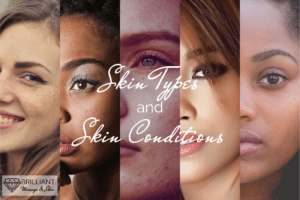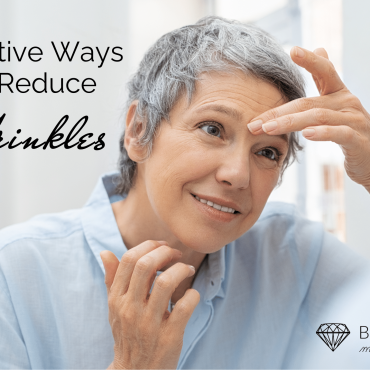Skin Types and Skin Conditions


There are also combinations of skin types to confuse the issue further!
Your skin needs will determine which category your skin falls under, a combination of its natural type and any conditions you have. Once you know this, you can make sure you get the right treatments and products for your needs.
The Most Common Skin Types
Dry Skin
If you have dry skin, you’ll often find that it feels sensitive, flaky, and occasionally sore. If your skin seems to lack moisture, it’s a sure sign that your skin is too dry and needs extra hydrating. Or you can also try the proper diet for dry skin.
Normal Skin
If you’re lucky enough to have typical type skin, it will be smooth and pink in appearance, with very few overly visible pores. You will have hardly any blemishes if any at all, and your skin will feel well hydrated and not irritated.
Oily Skin
Many people have oily skin and don’t seem to know how to best deal with it. The over-production of oils by the sebaceous glands creates an oily skin appearance and often leads to blackheads and acne. Oily skin types are very susceptible to pimples and blemishes.
Oily But Dehydrated
Many people mistakenly diagnose their skin as being dry when it’s oily – but lacking water. Oily skin can also be dehydrated. Dehydrated skin will protect itself by producing more oil, giving you the feel of oily skin when you need more water. Underneath, it’s tight and flaky but with a layer of oil on the surface.
Combination Skin
Combination skin tends to be dry in some places and oily in others. In most combination skin cases, it’s the T-zone that’s oily, while the rest of the face can tend to be dry if it’s not cared for properly.
Sensitive Skin
Sensitive skin is, as it sounds – prone to dryness, flakiness, soreness, and inflammation.
But is it naturally sensitive, or has it been sensitized? One is a condition, and one is a skin type.
Sensitized Skin
Most people diagnose their skin as sensitive because sensitive skin and sensitized skin look and feel similar – but sensitized and sensitive skin is entirely different. If your skin is naturally sensitive, it will always have been that way. You’ve probably always had to watch the products you use because you flare up at anything.
Sensitized skin tends to develop over the years, often because of environmental factors, using unsuitable products, certain medications, and lifestyle factors. Treatment and restoration of sensitized skin are possible.
In addition, your skin type can change with the seasons, hormones, and environmental factors, which may cause dryness, sensitivity, or oiliness.
Skin Conditions

Acne – A stressful during our teen years, but this condition also affects adults.
Rosacea – Affecting mainly adults, this causes redness and sometimes rashes that can be distressing.
Sun Damage – A more or less preventable skin condition leads to visible hyperpigmentation, fine lines, and creepiness.
Dehydration – This shows up in dull skin caused by a lack of water and good hydration.
How you treat skin types and conditions determines their differences. Your skin type sets your daily routine and core skincare products. A licensed esthetician will be able to advise you on the best way to minimize symptoms and ensure that the situation never recurs after treatment. Long-term and temporary skin conditions, however, are treated separately. Wants to talk to a licensed esthetician about your skin type or skin condition? Give us a call or book online for a session with us. We are so glad to discuss more with you.
Brilliant Massage & Skin
Burlington, Vermont


